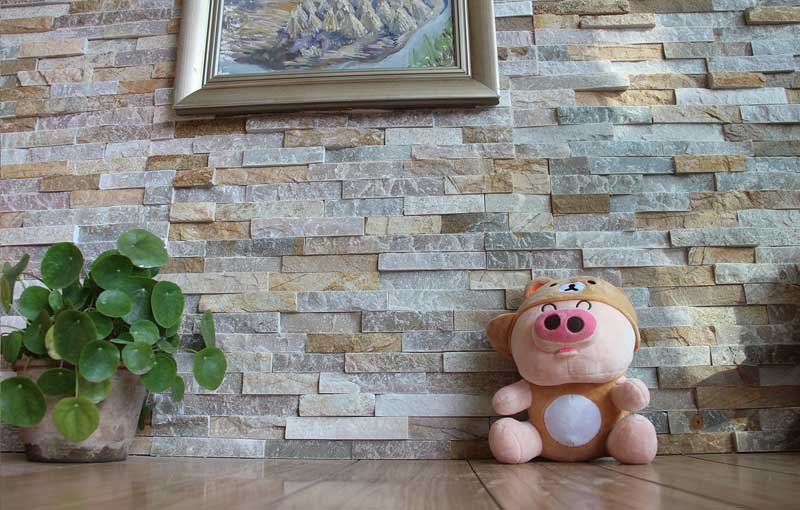Außenverkleidung aus Stein Kann die Ästhetik eines beliebigen Raums erhöhen, aber es gibt Zeiten, in denen Sie sie vielleicht entfernen möchten oder müssen. Unabhängig davon, ob es sich um Schäden, veraltete Designs oder ein Renovierungsprojekt handelt, kann das Entfernen von Steinverkleidungen eine herausfordernde Aufgabe sein, die sorgfältige Vorbereitung und ordnungsgemäße Werkzeuge erfordert. Hier finden Sie eine detaillierte Schritt-für-Schritt-Anleitung, mit der Sie natürliche Steinverkleidung effektiv entfernen können, ohne die darunter liegende Wand unnötig zu beschädigen.
-
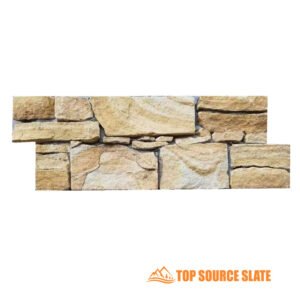 Außenwandverkleidung aus natürlichem Z-Stein im neuen Stil
Außenwandverkleidung aus natürlichem Z-Stein im neuen Stil -
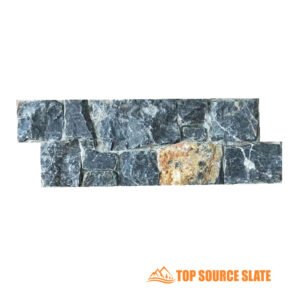 Außenverkleidung aus natürlichem Z-Stein im neuen Stil
Außenverkleidung aus natürlichem Z-Stein im neuen Stil -
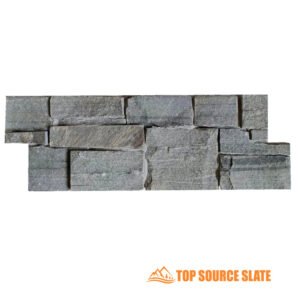 Großhandelspreis für Außenplatten aus Naturstein
Großhandelspreis für Außenplatten aus Naturstein -
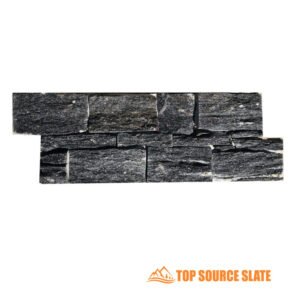 Kamin aus schwarzem Quarzstein
Kamin aus schwarzem Quarzstein -
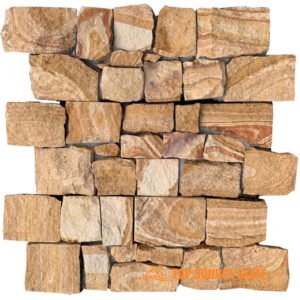 Sandstein-Z-Panel-Steinwandverkleidung zum Neupreis
Sandstein-Z-Panel-Steinwandverkleidung zum Neupreis -
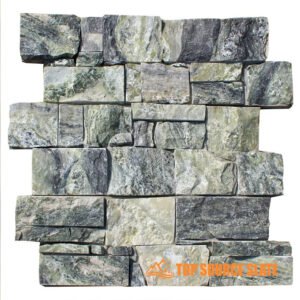 Ineinandergreifende Z-Steinverkleidungsplatten zum Fabrikpreis
Ineinandergreifende Z-Steinverkleidungsplatten zum Fabrikpreis -
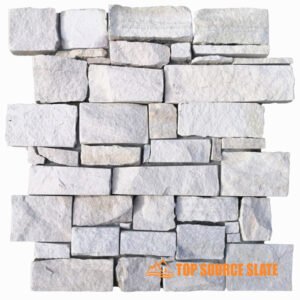 Stapelkamin aus weißem Sandstein
Stapelkamin aus weißem Sandstein -
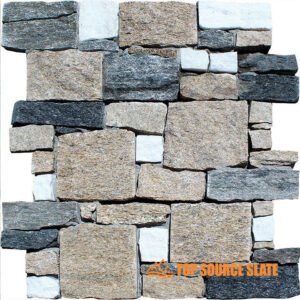 Außendekorationsstein aus Kulturstein
Außendekorationsstein aus Kulturstein -
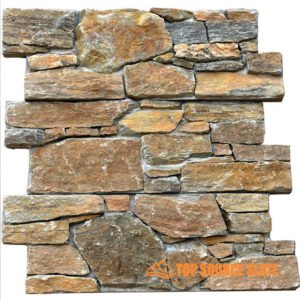 Rustikale Wandverkleidung aus Quarzstein mit Z-Fliesen
Rustikale Wandverkleidung aus Quarzstein mit Z-Fliesen -
 Produkte aus kultiviertem Stein mit geteilter Schieferplatte
Produkte aus kultiviertem Stein mit geteilter Schieferplatte -
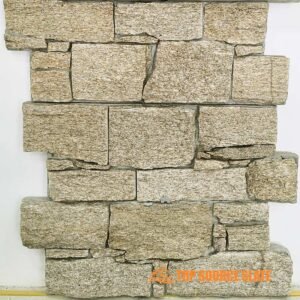 Wandverkleidung aus Granit Z-Stein
Wandverkleidung aus Granit Z-Stein -
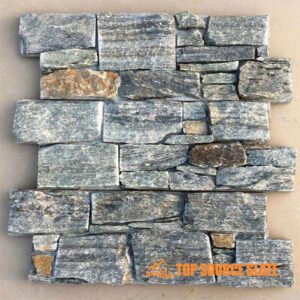 China-Lieferant für ineinandergreifende gestapelte Steinverkleidungen in verschiedenen Farben
China-Lieferant für ineinandergreifende gestapelte Steinverkleidungen in verschiedenen Farben -
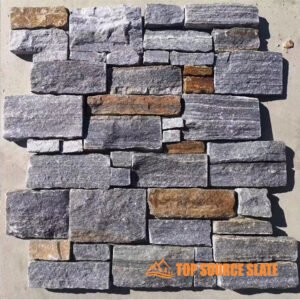 China Großhandel Z-förmiger Kulturstein Country Ledgestone
China Großhandel Z-förmiger Kulturstein Country Ledgestone -
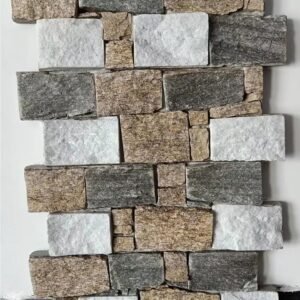 In China beliebte ineinandergreifende Steinverkleidungs-Z-Paneele
In China beliebte ineinandergreifende Steinverkleidungs-Z-Paneele -
 Rustikale Außenseite mit Trockensteinfurnier aus Schiefer
Rustikale Außenseite mit Trockensteinfurnier aus Schiefer -
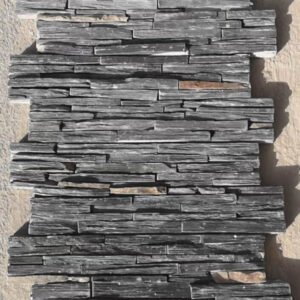 Leistenplatten aus Steinfurnier mit schwarzer Schieferzementrückseite
Leistenplatten aus Steinfurnier mit schwarzer Schieferzementrückseite -
 Mehrfarbiger, mit Schieferzement unterlegter natürlicher ineinandergreifender Simsstein
Mehrfarbiger, mit Schieferzement unterlegter natürlicher ineinandergreifender Simsstein -
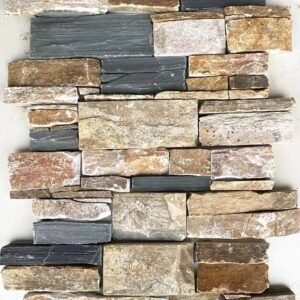 Natürliche Ledgestone-Stackstone-Wandfliese mit Zementrückseite
Natürliche Ledgestone-Stackstone-Wandfliese mit Zementrückseite -
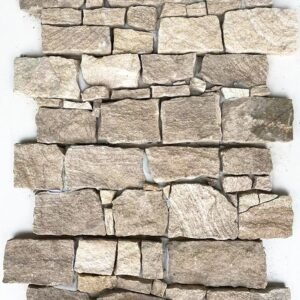 Z-förmige, gestapelte Steinverkleidung
Z-förmige, gestapelte Steinverkleidung -
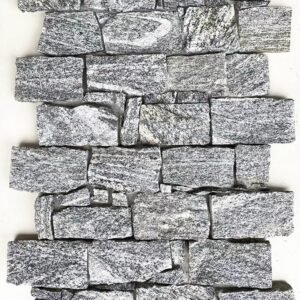 Heißverkaufte Ledgestone-Wandverkleidungsplatten
Heißverkaufte Ledgestone-Wandverkleidungsplatten
1. Beurteilung der Art der Installation
Bevor Sie mit dem Entfernungsprozess beginnen, müssen Sie unbedingt feststellen, wie die äußere Steinverkleidung angebracht wurde. Diese Beurteilung bestimmt die für die Arbeit erforderlichen Werkzeuge, Zeit und Methoden.
Mit Mörtel verklebt, natürlich Steinverkleidung
Die meiste Außenverkleidung wird unter Verwendung von Mörtel installiert, das als Bindungsmittel zwischen Stein und Wandoberfläche fungiert. Mörserte Steinverkleidungen finden Sie sowohl an Außen- als auch an Innenwänden. Wenn Sie direkt mit Mörtel eingehalten werden, kann der Entfernungsprozess arbeitsintensiv sein, da jeder Stein einzeln weggebrochen werden muss. Das Meißeln um die Fugen des Steins, in dem der Mörtel sitzt, ist der effektivste Weg, um jedes Stück zu entfernen. Mörserbindungen sind in der Regel schwierig, erwarten Sie also erhebliche Kraft.
Steinverkleidung mit mechanischen Fixierungen (gerahmte Installation)
In einigen Fällen, Steinverkleidung ist auf einem Framework installiert, entweder Holz oder Metall. Diese Art der Verkleidung wird normalerweise mit Schrauben oder Nägeln befestigt und kann in großen Abschnitten entfernt werden. Durch sanftes Tippen auf die Verkleidung und das Hören eines hohlen Klangs können Sie feststellen, ob die Verkleidung auf einem Hintergrundrahmen montiert ist. Eine gerahmte Natursteinverkleidung ist im Allgemeinen leichter zu entfernen, da die gesamte Platte in größeren Stücken oft von der Wand abgebaut werden kann, wodurch die Arbeit reduziert wird. Es ist jedoch zusätzliche Sorgfalt erforderlich, um die Beschädigung der darunter liegenden Wand zu vermeiden.
Furniersteinverkleidung
Das dünne Steinfurnierverkleidungen ist im Vergleich zu Steinstücken in voller Größe leichter und leichter zu entfernen. Furniere werden typischerweise wie Fliesen mit einer dünnen Mörtelschicht oder Klebstoff festgehalten. Der Entfernungsprozess für Veneers ähnelt dem von Keramikfliesen, wodurch ein Meißel oder ein Schaber erforderlich ist, um die Bindung zu brechen und die Steine zu heben. Die Entfernung von Furnier ist weniger mühsam, erfordert jedoch immer noch Sorgfalt, um die Mauer zu vermeiden.
2. Vorbereitung auf den Job
Die ordnungsgemäße Vorbereitung ist für eine erfolgreiche Entfernung des Außensteinverkleidungen von wesentlicher Bedeutung. Die richtigen Werkzeuge und Sicherheitsvorkehrungen erleichtern die Arbeit nicht nur, sondern stellen auch sicher, dass Sie die darunter liegende Wand nicht zu übermäßigem Schaden zufügen.
Schutzausrüstung
Beim Entfernen von Steinverkleidungen sollte die Sicherheit oberste Priorität haben. Herumfliegende Trümmer, scharfe Werkzeuge und Staub stellen bei diesem Vorgang häufige Gefahren dar. Tragen Sie Folgendes:
- Schutzbrille: Schützen Sie Ihre Augen vor herumfliegenden Mörtel- und Steinsplittern.
- Handschuhe: Strapazierfähige Arbeitshandschuhe verhindern Schnittverletzungen durch scharfe Steine und Werkzeuge.
- Staubmaske: Beim Entfernen von Mörtel oder Kleber entsteht viel Staub, der die Lunge reizen kann.
- Lange Ärmel und Arbeitsstiefel: Diese schützen Ihre Haut vor Schnitten, Abschürfungen und schweren Steinsplittern.
Werkzeuge, die Sie benötigen
Um die Entfernung so effizient wie möglich zu gestalten, ist es wichtig, über die richtigen Werkzeuge zu verfügen. Zu den grundlegenden Werkzeugen, die Sie benötigen, gehören:
- Hammer und Kaltmeißel: Diese sind für das manuelle Abbrechen von Stein und Mörtel unerlässlich.
- Brechstange: Für das Treiben großer Steinpaneele von der Wand weg, insbesondere bei der Arbeit mit gerahmten Installationen.
- Kraftbohrer mit Mauerwerksbit: Wenn der Mörtel besonders hartnäckig ist, kann das Bohren von Löchern in den Mörtel erleichtert werden, um zu meißeln.
- Winkelmühle: Dieses Elektrowerkzeug hilft dabei, dicke Mörser- oder Betonverbindungen in voller Größe des Außensteins durchzuschneiden.
- Drahtbürste: Verwenden Sie dies, um Restmörser und Klebstoff nach dem Entfernen des Steins zu reinigen.
3.. Der Entfernungsprozess
Sobald Sie die Art der Installation bewertet und die entsprechenden Werkzeuge und Sicherheitsausrüstung gesammelt haben, können Sie mit dem Entfernungsprozess beginnen.
Schritt 1: Beginnen Sie an den Kanten
Beim Entfernen von Steinverkleidungen sollte man sich zunächst auf die Kanten oder Ecken der Installation konzentrieren. Diese Bereiche sind in der Regel am einfachsten zugänglich und bieten einen natürlichen Ausgangspunkt für die Hebelwirkung. Wenn Sie an den Rändern beginnen, verringert sich das Risiko einer Beschädigung großer Teile der darunter liegenden Wand und Sie erhalten einen kontrollierteren Entfernungsprozess.
1.1. Einsetzen der Werkzeuge
Verwenden Sie einen kalten Meißel oder einen Streakbalken, um zwischen Naturstein und der Wand zu keilen. Beginnen Sie mit kleinen, leichten Haken mit einem Hammer, um zu vermeiden, dass die darunter liegende Wandstruktur beschädigt wird. Ziel ist es, ausreichend Platz zwischen Stein und Mörtel zu schaffen, damit Sie die Hebelwirkung anwenden können, um die Steine zu entfernen. Wenn die Verkleidung direkt mit Mörtel eingehalten wird, schütteln Sie vorsichtig an den Rändern weg, bis Sie auf die Mörtelfugen zugreifen können.
1.2. Hebel nehmen
Sobald Sie die Kantensteine gelockert haben, streichen Sie sie vorsichtig ab, indem Sie einen konstanten Druck mit der Stange ausüben. Seien Sie vorsichtig, besonders wenn die Steine groß oder schwer sind. Plötzliche Idioten könnten Risse oder Chips in der darunter liegenden Oberfläche verursachen, insbesondere wenn es sich um einen Ziegel oder eine Trockenmauer handelt. Wenn Sie bemerken, dass der Stein nicht leicht abfällt, erzwingen Sie ihn nicht.
1.3. Schäden vermeiden
Arbeiten Sie langsam, um zu vermeiden, dass die Wand erhebliche Beschädigungen verursacht. Wenn Sie an den Rändern beginnen, vermeiden Sie auch, die größeren Abschnitte zu schwächen’ strukturelle Integrität, die zusammenbrechen oder brechen könnte, wenn sie nicht sorgfältig behandelt werden.
Schritt 2: Lösen Sie den Mörtel
Sobald die Ränder der Außensteinverkleidung entfernt wurden, besteht die nächste Herausforderung darin, den Mörtel zu lösen. Mörtel wirkt als primärer Klebstoff für die Steinverkleidung, und seine Entfernung erfordert einen systematischen Ansatz.
2.1. Den Mörtel wegschütten
Verwenden Sie einen Hammer und einen Meißel, um den Mörtel, der die Natursteinverkleidung umgibt, vorsichtig zu entfernen. Es ist am besten, Ihren Meißel eher in die Mörserverbindungen zwischen Steinen als direkt unter ihnen zu wecken. Dies verringert das Risiko, die Wand zu beschädigen und gleichzeitig den Mörser effektiv abzubauen. Mörtel kann unglaublich stark sein, daher ist es wichtig, stabilen Druck auszuüben. Wiederholte Lichtblöcke sind effektiver und sicherer als harte Streiks, die die Wand hinter Steinfurnierverkleidungen knacken oder beschädigen könnten.
2.2. Bohren für hartnäckigen Mörtel
Für härtere, dickere Mörtelschichten müssen Sie möglicherweise eine Bohrmaschine mit Steinbohrer verwenden. Das Bohren von Löchern in den Mörtel schwächt dessen Bindung und erleichtert das Herausmeißeln. Dies ist besonders nützlich für älteren Mörtel, der stark ausgehärtet ist. Bei der Verwendung von Elektrowerkzeugen in der Nähe von empfindlichen Oberflächen oder Trockenbauflächen ist jedoch Vorsicht geboten, da übermäßiges Bohren zu Schäden führen kann.
2.3. Auf Fortschritt prüfen
Überprüfen Sie, wie leicht der Stein lockert, wenn Sie den Mörtel durcharbeiten. Wenn sich das Steinfurnierverkleidungen nach dem Entfernen des Mörsers nicht bewegt, kann er in anderen Gebieten immer noch verbunden sein. Bewegen Sie sich systematisch von einem Stein zum nächsten und stellen Sie sicher, dass Sie den gesamten Mörtel ohne Eile entfernen, da dies Teile der Verkleidung stecken bleiben.
Natursteinverkleidung: Der komplette Leitfaden
Die Vor- und Nachteile einer modernen Außenverkleidung aus Stein
Die 10 größten Großhändler für Natursteinverkleidungen im Vereinigten Königreich
8 Faktoren für die Auswahl eines Großhändlers für Natursteinwandverkleidungen
Schritt 3: Verwenden Sie einen Winkelschleifer für harte Mörtel
In Fällen, in denen Mörtel besonders hartnäckig oder dick ist, ist ein Handmeißel möglicherweise nicht ausreichend. Ein Winkelschleifer, der mit einer Diamantklinge ausgestattet ist, kann ein unschätzbares Werkzeug zum Durchschneiden des Mörsers sein, ohne die Wand zu beschädigen.
3.1. Auswählen des richtigen Werkzeugs
Ein Winkelschleifer mit einer Diamant- oder Mauerwerksklinge ist für das Schneiden von hartnäckigem, anhaftendem Material wie Mörtel konzipiert. Stellen Sie vor der Verwendung sicher, dass Sie über die richtige Sicherheitsausrüstung verfügen: Schutzbrille, Handschuhe und Staubmaske. Winkelschleifer erzeugen Staub und kleine Rückstände, daher ist das Arbeiten in einem gut belüfteten Raum unerlässlich.
3.2. Durchtrennen von Mörtelfugen
Führen Sie die Winkelschleife entlang der Mörserverbindungen zwischen der exterioren Steinwandverkleidung. Das Ziel ist es, tief genug in den Mörtel zu schneiden, dass Sie seinen Griff am Stein schwächen, ohne in die darunter liegende Wand zu schneiden. Beginnen Sie mit niedriger Geschwindigkeit und erhöhen Sie den Druck bei Bedarf allmählich. Die Schnittwirkung des Winkelschleifers erzeugt eine saubere Pause zwischen den Steinen und der Wand, sodass sie mit einem Streambalken oder einem Hammer leichter zu entfernen sind.
3.3. Umgang mit dickem oder festem Mörtel
Wenn der Mörtel besonders dick ist, überlegen Sie, ob der Stein und Mörtel in einem überschneidet werden “X” Muster. Dies hilft den Stein in kleinere, überschaubare Abschnitte. Sobald der Mörtel geschnitten wurde, können Sie mit einem Meißel oder einer Streakbalken mit dem Entfernen von Außenverkleidungsstein in Stücken fertiggestellt werden. Denken Sie daran, ein Winkelschleifer ist leistungsstark. Vermeiden Sie es daher, zu viel Kraft zu verwenden, da dies die Schädigung der Wand riskieren könnte.
Schritt 4: Entfernen Sie große Paneele in Abschnitten (für gerahmte Verkleidung)
Bei gerahmten Installationen, bei denen Ideen für die Verkleidung von Außenstein an einem Holz- oder Metallrahmen befestigt sind, kann der Vorgang viel schneller sein, da große Abschnitte auf einmal entfernt werden können.
4.1. Identifying Framed Installations
Gerahmte Steinverkleidungsanlagen werden auf einer Trägerstruktur, typischerweise Holz oder Metall, montiert, die die Verkleidungsplatten an Ort und Stelle hält. Durch Klopfen an der Wand können Sie gerahmte Abschnitte leichter identifizieren, da diese im Vergleich zu mit Mörtel verklebten Verkleidungen hohl klingen. Konzentrieren Sie sich nach der Lokalisierung darauf, die Paneele vom Rahmen zu entfernen und nicht auf einzelne Steine.
4.2. Große Panels abhebeln
Führen Sie ein Brecheisen oder einen großen Meißel zwischen die Platte und den Rahmen ein. Üben Sie gleichmäßigen Druck aus, um die Platte von der Unterlage zu trennen. In manchen Fällen müssen Schrauben oder Nägel entfernt werden, bevor Sie die Platte abhebeln können. Seien Sie beim Abziehen großer Abschnitte vorsichtig, da diese schwer sein können und sich beim Lösen vom Rahmen plötzlich verschieben können.
4.3. Schwerere Abschnitte verwalten
Wenn die Verkleidung besonders schwer ist, nehmen Sie Hilfe in Anspruch, um die Paneele nach dem Lösen vom Rahmen abzusenken. Das Fallenlassen großer Abschnitte oder unsachgemäße Handhabung kann die umliegenden Bereiche beschädigen oder ein Sicherheitsrisiko darstellen.
4.4. Aufräumen
Sobald die Platten entfernt wurden, bleiben wahrscheinlich Rückstände von Schrauben, Nägeln oder Kleber zurück, die den Rahmen befestigt haben. Dies sollte mit einer Drahtbürste oder einem ähnlichen Werkzeug entfernt werden, um eine saubere Oberfläche für zukünftige Arbeiten zu hinterlassen.
4. Umgang mit Wandschäden
Nach dem Entfernen der Steinverkleidung ist es wichtig, die Wand auf Schäden zu inspizieren. Außeneinkleidung, insbesondere Mörseranlagen, kann die Oberfläche ungleichmäßig oder mit Löchern unterliegen.
Wandschäden reparieren
- Patchlöcher und Risse: Verwenden Sie eine qualitativ hochwertige Patch-Verbindung, um alle von Mörser zurückgelassenen Löcher zu füllen. Größere Risse oder Risse erfordern möglicherweise einen erheblicheren Füllstoff. Tragen Sie die Verbindung gleichmäßig mit einer Kelle auf und schleifen Sie sie nach dem Trocknen nach einem glatten Finish.
- Verstärkung der Wandoberfläche: Wenn die zugrunde liegende Wand erhebliche Schäden erlitten hat, sollten Sie sie mit einem Bindungsmittel oder zusätzlichen Gips verstärken, bevor Sie ein neues Oberflächenfinish auftragen.
Reinigung des Restmörners und Klebstoffs
Nach dem Entfernen von Steinwandverkleidungsplatten ist es wahrscheinlich, dass an der Wand Reste von Mörtel oder Kleber haften bleiben. Diese Rückstände können mit einer steifen Drahtbürste oder einem Hochdruckreiniger entfernt werden, sodass eine saubere Oberfläche für Reparaturen oder Neuinstallationen entsteht.
5. Besondere Überlegungen
Furnier vs. vollformatige Steine
Es gibt einen Unterschied zwischen dünnen Steinfurnieren und vollflächigen Steinverkleidungen für Außenwände. Furniere sind leichter und lassen sich leichter entfernen, da sie normalerweise wie Fliesen haften. Vollformatige Steine erfordern jedoch mehr Kraft und Sorgfalt, da sie schwerer und oft fester Bestandteil der Wandstruktur sind.
Wann Sie Fachleute hinzuziehen sollten
Wenn Sie sich über den Entfernungsprozess oder den Umgang mit einem großen Bereich nicht sicher sind, ist es möglicherweise am besten, professionelle Hilfe zu suchen. Spezialisierte Auftragnehmer können die Verkleidung schnell und effizient entfernen und potenzielle Schäden an Ihrem Eigentum minimieren.
6. FAQ
1. Mit welchem Werkzeug wird zum Entfernen von Steinverkleidungen verwendet?
Um die Steinverkleidung zu entfernen, benötigen Sie normalerweise eine Meißel, Hammerund a Mauerwerksbar. Für größere Bereiche können Sie a verwenden Kraftbohrer mit einem Meißelbefestigung oder a Jackhammer Um das Material zu lockern. Schutzausrüstungwie Handschuhe und Schutzbrillen sind während dieses Prozesses von wesentlicher Bedeutung.
2. Was ist der einfachste Weg, um Steinfurnier zu entfernen?
Der einfachste Weg, das Steinfurnier zu entfernen, besteht darin, die folgenden Schritte zu befolgen:
- Bewerten Sie die Mörtellinien runden Sie das Steinfurnier mit einer Schleifmaschine oder einem Universalmesser ab.
- Verwenden Sie a Meißel und Hammer um das Furnier an den Rändern zu lösen.
- Abhebeln Schneiden Sie das Furnier vorsichtig mit einem Stemmeisen aus Mauerwerk ab.
- Für große Abschnitte oder hartnäckige Stellen verwenden Sie a Kraftmeißel um den Prozess zu beschleunigen.
3. Was ist der Unterschied zwischen Steinverkleidung und Steinfurnier?
- Steinverkleidung: Bezieht sich auf dünne Natur- oder Kunststeinstücke, die zu dekorativen Zwecken auf die Außen- oder Innenoberfläche eines Gebäudes aufgebracht werden. Es fungiert als schützende und ästhetische Schicht.
- Steinfurnier: Bezieht sich auf dünnere Steinstücke, oft künstlich, die das Aussehen von Naturstein nachahmen. Es wird ähnlich wie Steinverkleidungen verwendet, ist jedoch in der Regel leichter und einfacher zu installieren.
4. Wie wird die Steinverkleidung befestigt?
Die Steinverkleidung wird mit Verwendung angebracht Zementbasierter Klebstoff oder Mörtel. Es kann direkt auf eine vorbereitete Oberfläche wie Beton oder über a angelegt werden Metalllatte oder Zementplatte auf gerahmten Strukturen. In einigen Fällen werden mechanische Anker oder Clips zur zusätzlichen Unterstützung verwendet, insbesondere auf Außenflächen.
7. Schlussfolgerung
Entfernen Außenverkleidung aus Stein ist ein arbeitsintensiver Prozess, der sorgfältige Planung und angemessene Werkzeuge erfordert. Unabhängig davon, ob Ihre Verkleidung Mörserladung auf einem Rahmen ist, liegt der Schlüssel zum Erfolg in Geduld und Präzision. Während kleine DIY -Projekte überschaubar sind, erfordern größere oder komplexere Jobs professionelle Unterstützung. Wenn Sie diesen Schritten befolgen, können Sie die Steinverkleidung effektiv entfernen und Ihre Wände für die nächste Stufe Ihrer Renovierung vorbereiten.
Wenn Sie suchen Hersteller und Lieferanten von gestapelten SteinenWir empfehlen Ihnen, unsere Produkte zu überprüfen.
- Mosaikmedaillons 1010 Produkte
- Verrückte Pflastersteinplatten 1414 Produkte
- Zufälliger loser Stein 1818 Produkte
- Trockener Stapelstein 2424 Produkte
- Wasserfall gestapelter Stein 1717 Produkte
- Marmor gestapelter Stein 1010 Produkte
- Geteilte Wandfliesen 1515 Produkte
- Ledgestone-Wandverkleidung 2828 Produkte
- Gestapelter Stein 3737 Produkte
Wir verfügen über mehr als 18 Jahre Exporterfahrung und bieten Muster vor Auftragserteilung an.
Wenn Sie weitere Hilfe benötigen oder etwas Individuelles besprechen möchten, wenden Sie sich bitte an unskontaktiere uns jederzeit.
Und wir würden gerne unser Fachwissen teilen, um auch Ihnen zu helfen!

